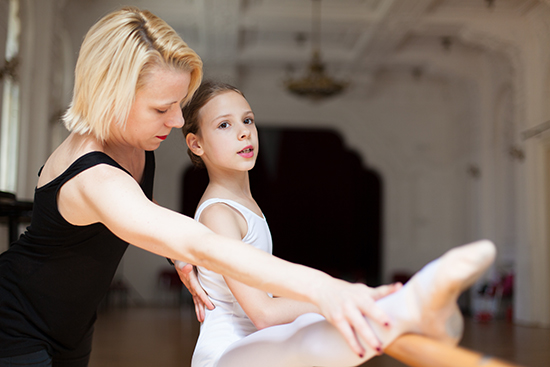Teaching dance is a fulfilling career that allows you to share your passion with others. A dance teacher education can be a combination of performance, formal training, and other experiences with dance. After dancing their entire lives, some dancers decide to devote their time to teaching. However, dance teachers lead busy, hectic lives ruled by demanding schedules, and that means that it can be difficult to continue fitting in personal dance practice or finding the time to stay in shape as a dancer.
For some teachers, especially younger ones, this can be a cause of distress. When your life was previously defined by dance – and your identity defined as a dancer – what happens when you no longer have the time to commit to your own dance practice? Or when you realize that your flexibility is not as impressive as it use to be, or that you can’t turn quite as many pirouettes as you could before you started teaching? This change is even more noticeable in the summer months, when teachers typically have more downtime.
This is a natural shift that comes with the territory, but don’t let it get you down. There are still so many ways you can continue being a dancer while you’re also a dance teacher.
Scheduling ‘Self-Classes’
The best teachers are the ones who continue learning and growing through their own dance practice. But this is easier said than done. For example, the last thing you may want to do after a long and grueling class with distracted kids is lace up your shoes and hit the barre. However, taking the time to fit dancing into your life is key to strengthening your identity as a dancer, and not just a teacher.
Block out an hour of time before or after your class to devote to your own practice. You could also schedule time to practice in the studio on days you don’t teach or on the weekend. If you freelance as a dance teacher, ask the studio owner if they would mind if you used a classroom on your own time – most will be fine with this.
Treat this solo time as if it was an actual class you registered for. Stick to the same time each week, and pencil in your personal practice days on your calendar.
Great Teachers Keep Learning
You’ll find that making a conscious effort to continue developing as a dancer also makes you a better teacher – and a more attractive instructor to prospective students and their parents. In an article on The Dancing Grapevine, continual learning and development is one of the top qualities that dancers and parents look for when selecting a new teacher. The article described “green lights” for teachers as including if they “innovate or take on new dance challenges,” cross-train in other dance styles and train with other teachers often.
A large part of being an effective teacher is empathy – and by being a “student” of your own dance practice, you can relate better to your students.
Summer Study
If you find yourself lamenting lost skills during the slower summer months, don’t despair. In addition to scheduling your own practice time at the studio, there are many other ways you can stay in shape as a teacher.
Dance Information recommended taking time to regularly stretch at home, joining open classes in other dance styles or signing up for a summer intensive. Seek out workshops, seminars and conferences on dance in cities near you. You can also volunteer and perform with a local dance studio or company. Another option is cross-training – check out our article here.


